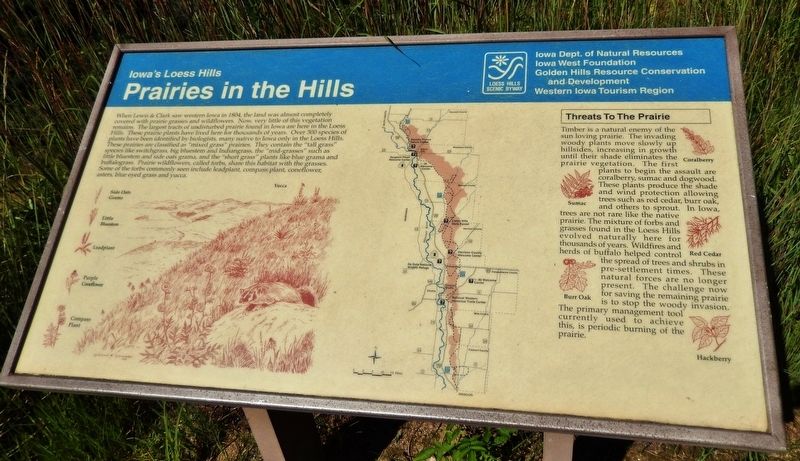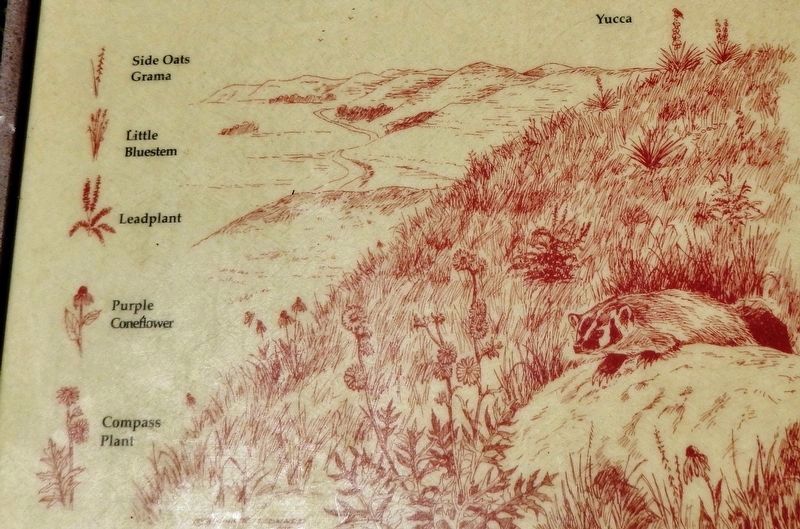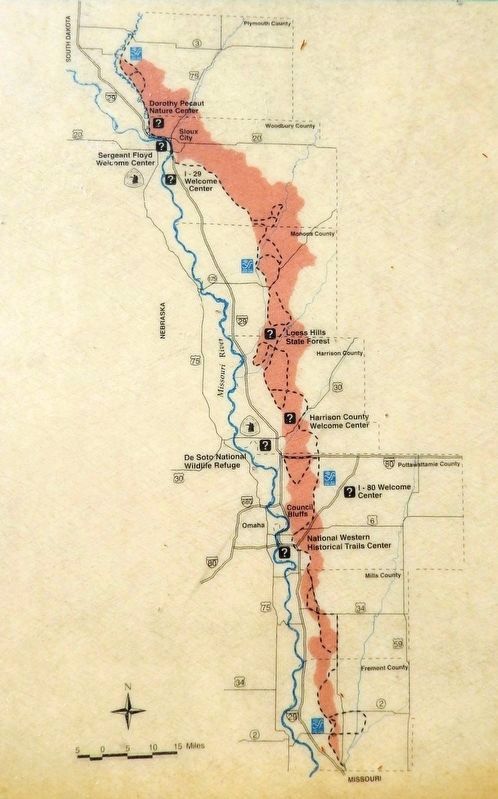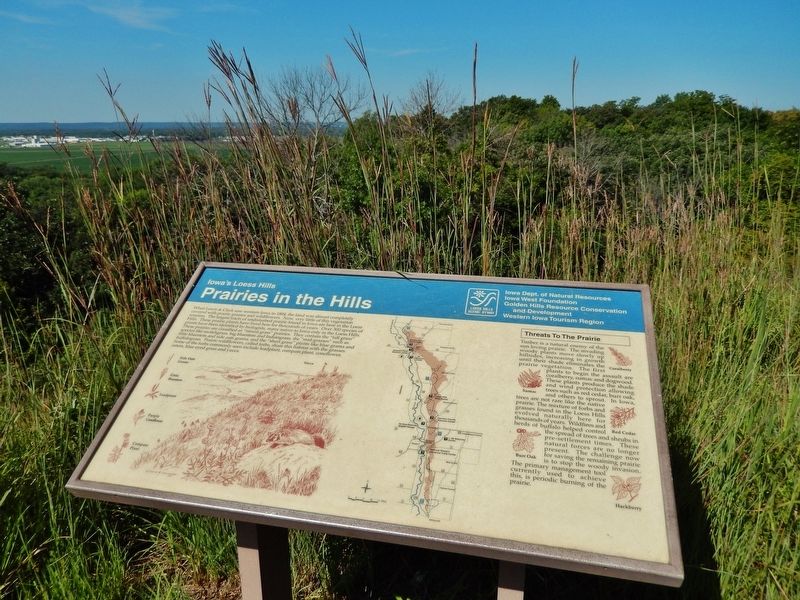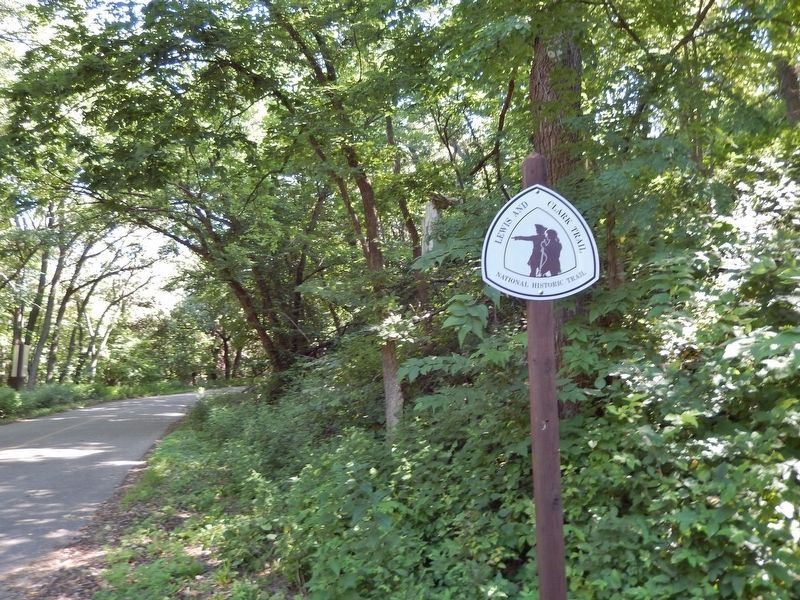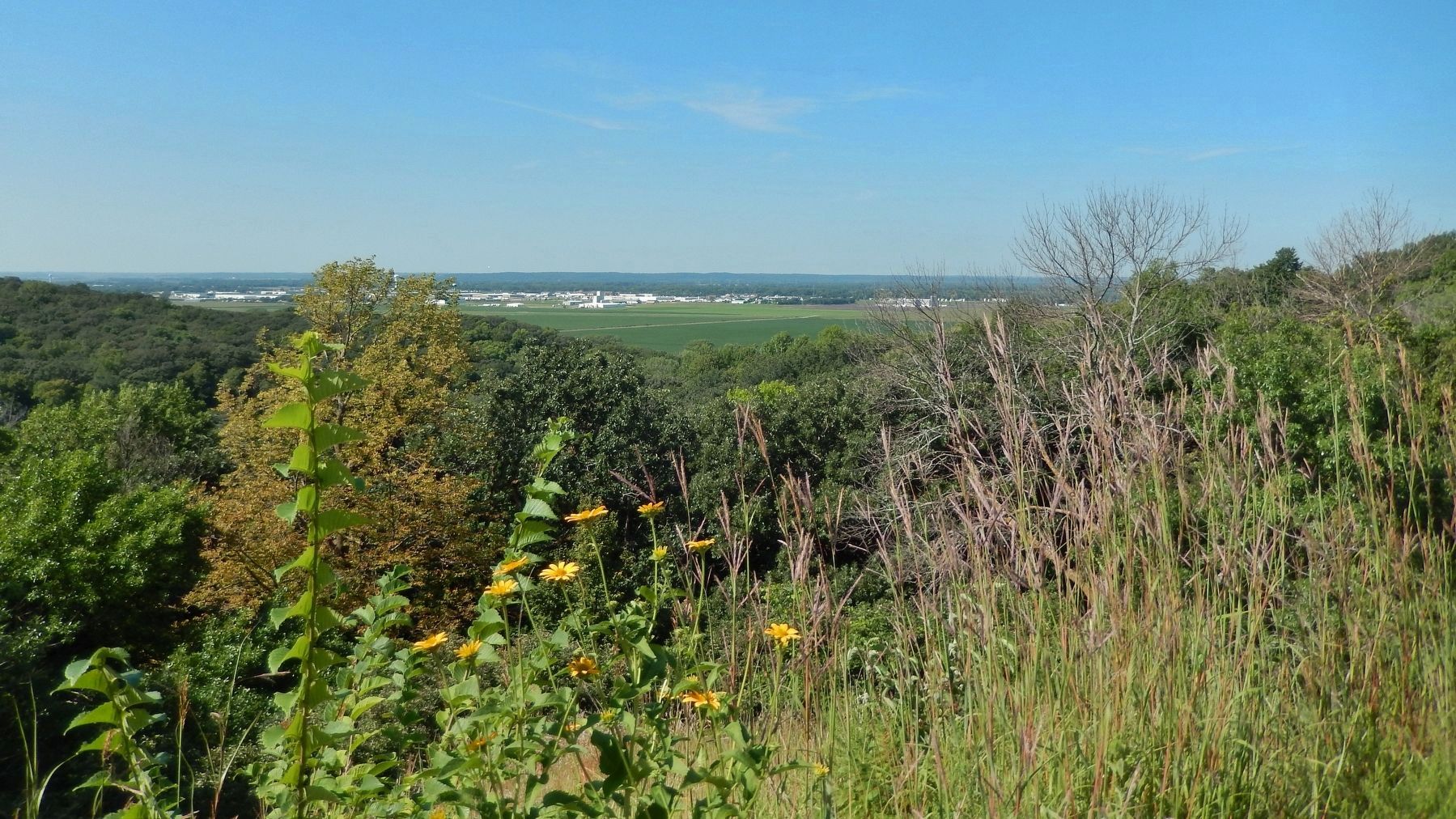Sioux City in Woodbury County, Iowa — The American Midwest (Upper Plains)
Prairies in the Hills
Iowa's Loess Hills
Threats To The Prairie
Timber is a natural enemy of the sun loving prairie. The invading woody plants move slowly up hillsides, increasing in growth until their shade eliminates the prairie vegetation. The first plants to begin the assault are coralberry, sumac and dogwood. These plants produce the shade and wind protection allowing trees such as red cedar, burr oak, and others to sprout. In Iowa, trees are not rare like the native prairie. The mixture of forbs and grasses found in the Loess Hills evolved naturally here for thousands of years. Wildfires and herds of buffalo helped control the spread of trees and shrubs in pre-settlement times. These natural forces are no longer present. The challenge now for saving the remaining prairie is to stop the woody invasion. The primary management tool currently used to achieve this, is periodic burning of the prairie.
Erected by Iowa Dept. of Natural Resources, Iowa West Foundation, Golden Hills Resource Conservation and Development, and Western Iowa Tourism Region.
Topics and series. This historical marker is listed in these topic lists: Environment • Exploration • Horticulture & Forestry. In addition, it is included in the Lewis & Clark Expedition series list. A significant historical year for this entry is 1804.
Location. 42° 33.278′ N, 96° 28.187′ W. Marker is in Sioux City, Iowa, in Woodbury County. Marker is on Stone State Park Drive, 0.6 miles west of Talbot Road, on the left when traveling west. Marker is located in a pull-out on the west side of Elk Point Overlook in Stone State Park. Touch for map. Marker is in this post office area: Sioux City IA 51109, United States of America. Touch for directions.
Other nearby markers. At least 8 other markers are within 5 miles of this marker, measured as the crow flies. Big Sioux River Valley (within shouting distance of this marker); An American Treasure (approx. 0.2 miles away); Native Peoples of the Loess (approx. 0.3 miles away); Geology Wonders (approx. 0.3 miles away); From Settlement to State Park (approx. 0.3 miles away); You Are Entering South Dakota (approx. 2.1 miles away in South Dakota); Grand Army of the Republic (approx. 4.1 miles away); Prospect Hill (approx. 5 miles away). Touch for a list and map of all markers in Sioux City.
Also see . . .
1. Lewis and Clark Corps of Discovery. When Captains Meriwether Lewis and William Clark led their Corps of Discovery through this region in the summer of 1804, the Hills were covered with prairie. The scant trees that existed hugged the water ways. Around the 1850's, change came to the Loess Hills. Farms, communities and roads checked the wilderness that had cleansed the prairie of the always encroaching trees and woodland plants and, as you can see now, trees blanket most of the hills. (Submitted on December 14, 2020, by Cosmos Mariner of Cape Canaveral, Florida.)
2. Loess Hills (Wikipedia). The Loess Hills have abundant oak-hickory hardwood forests and some of the last remaining stands of prairie grass in the region. The invasion of prairie and oak savanna areas by woodland species such as red cedar (not native to the Hills) is threatening the stability of the fragile soils, as well as diminishing the native ecosystems found there. (Submitted on December 14, 2020, by Cosmos Mariner of Cape Canaveral, Florida.)
Credits. This page was last revised on December 14, 2020. It was originally submitted on December 14, 2020, by Cosmos Mariner of Cape Canaveral, Florida. This page has been viewed 248 times since then and 24 times this year. Photos: 1, 2, 3, 4, 5, 6. submitted on December 14, 2020, by Cosmos Mariner of Cape Canaveral, Florida.
